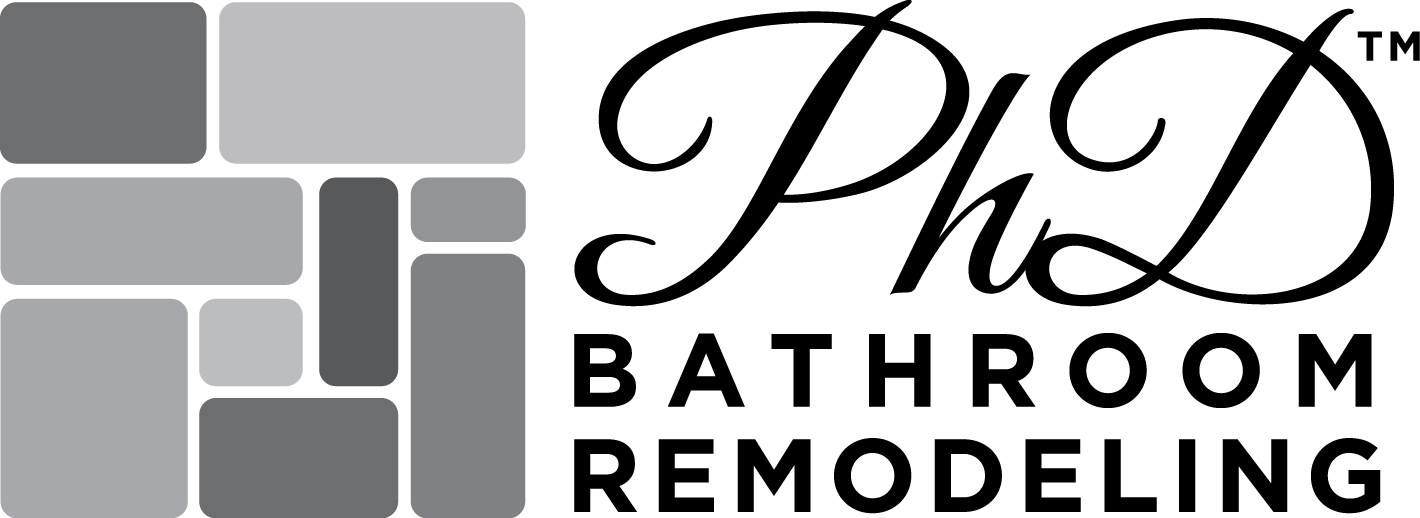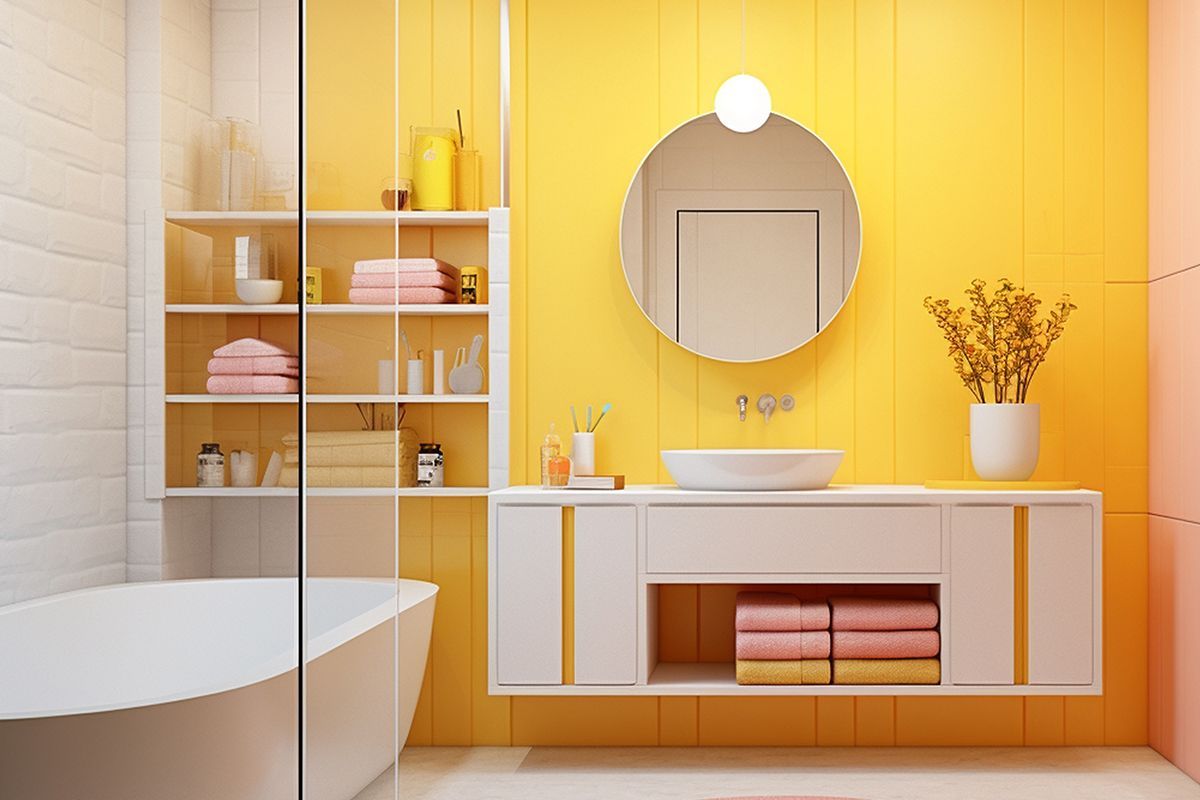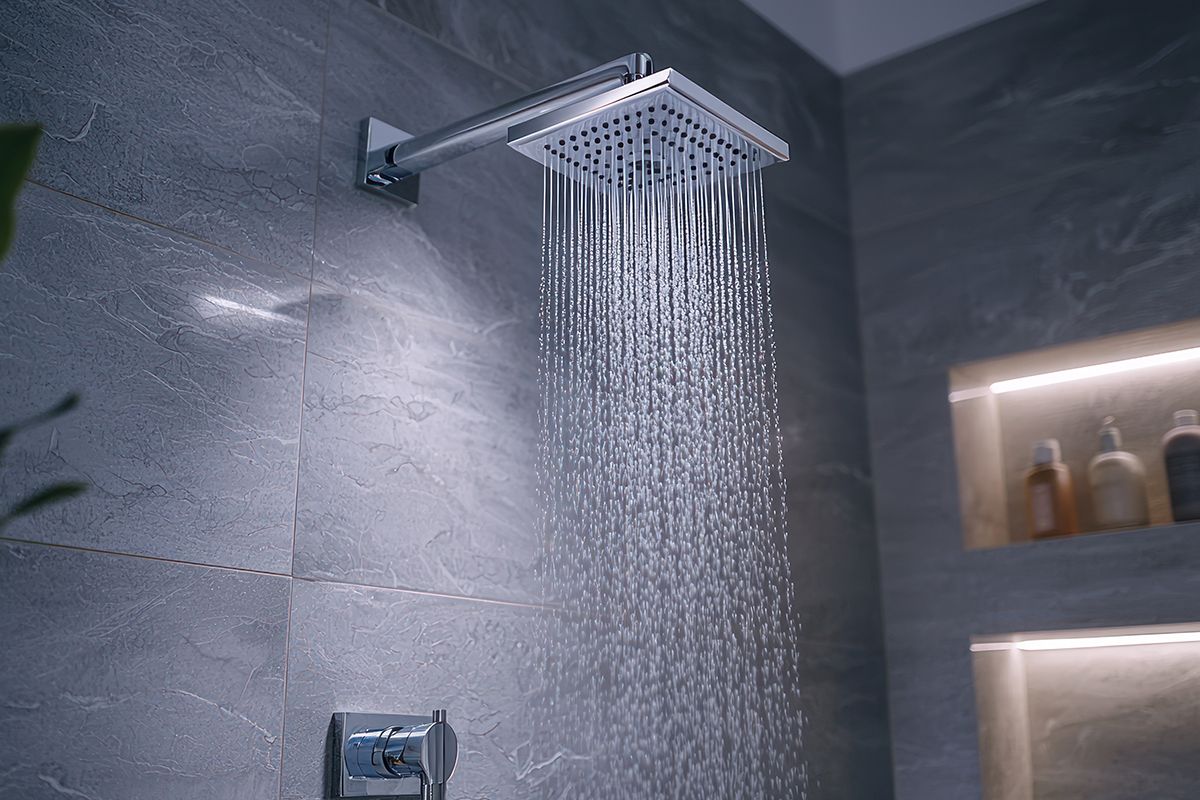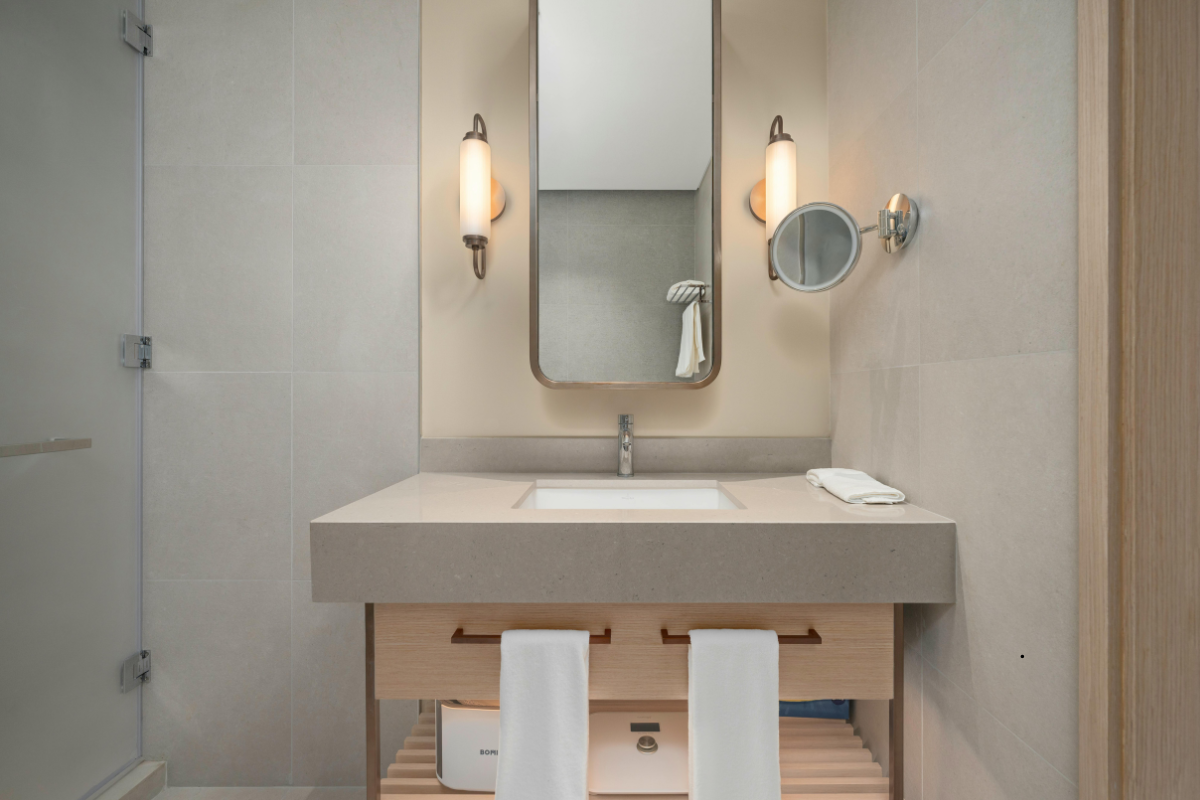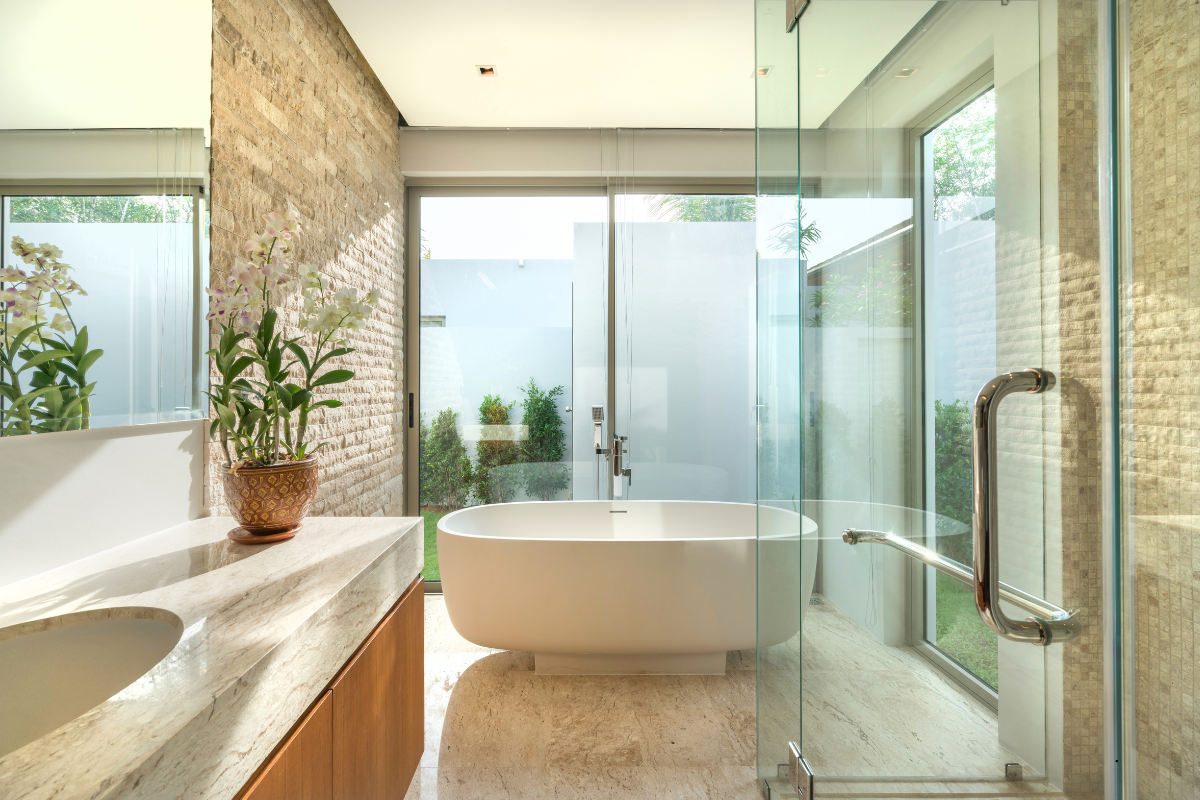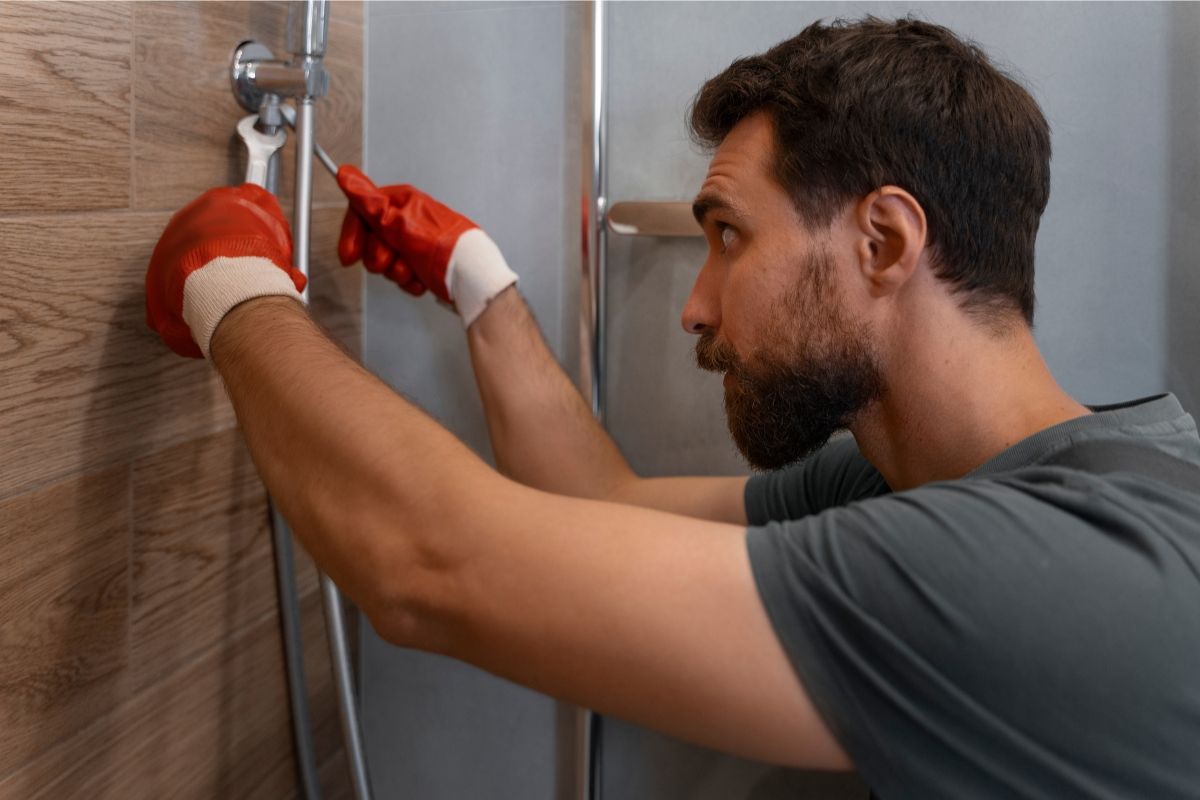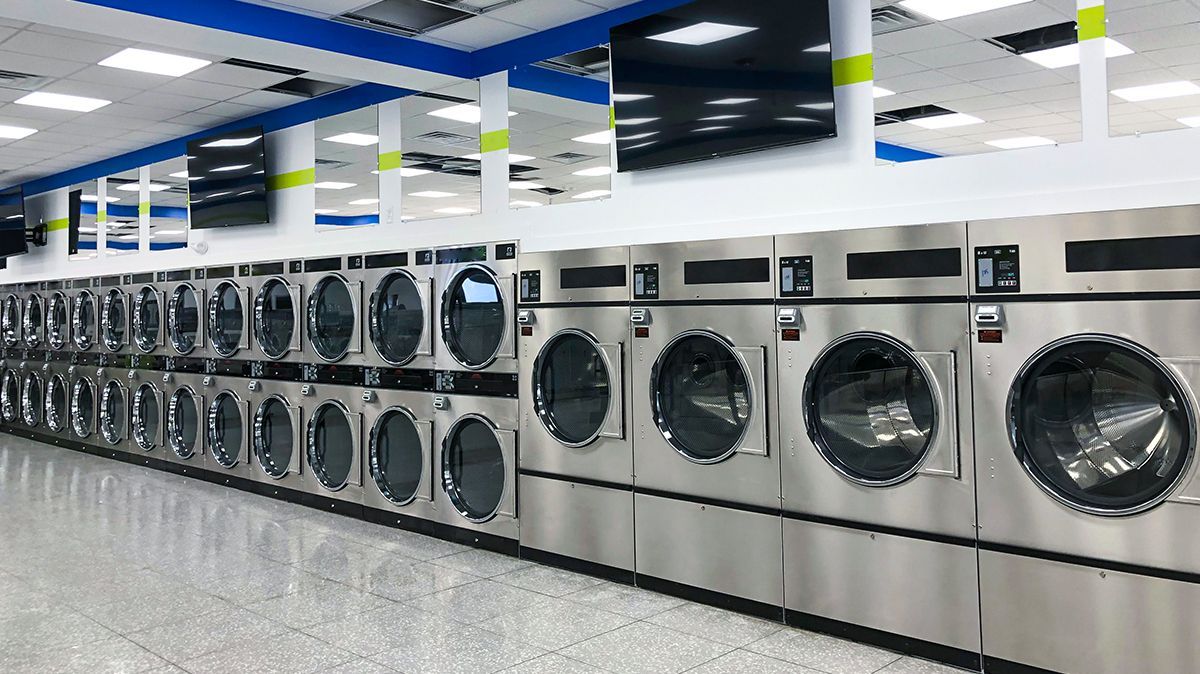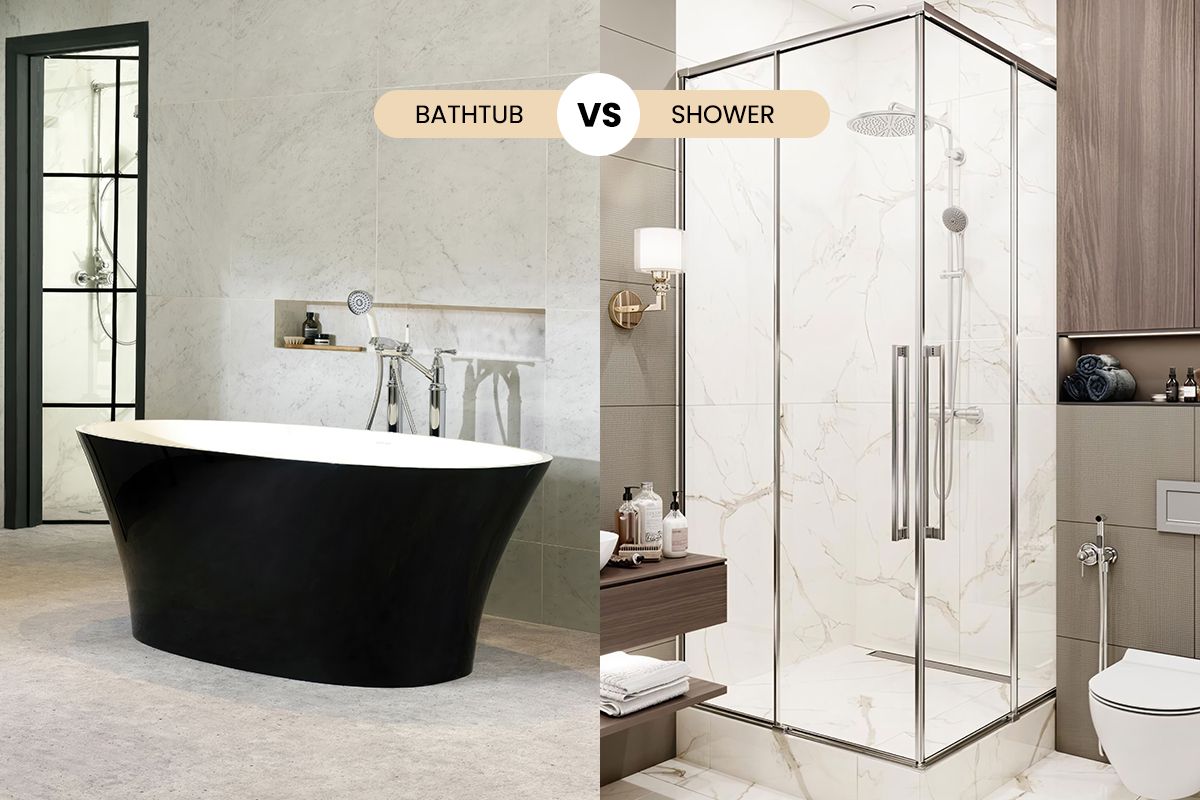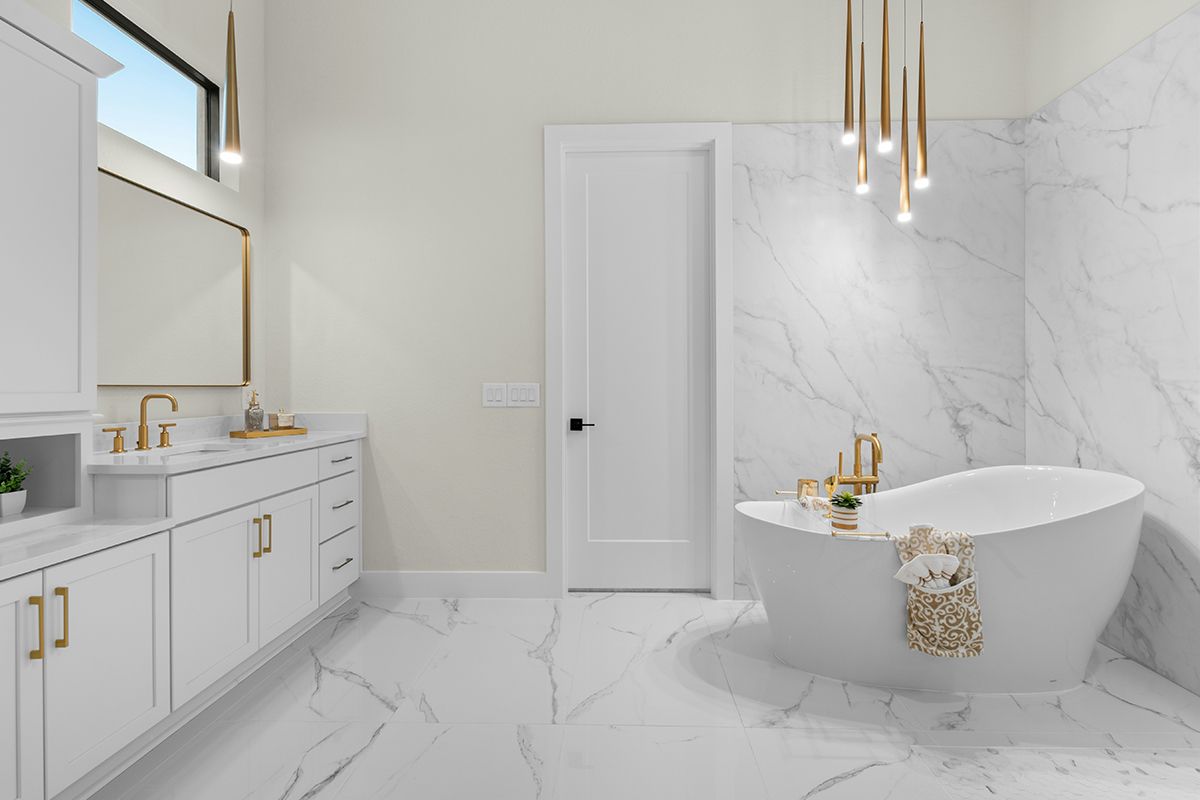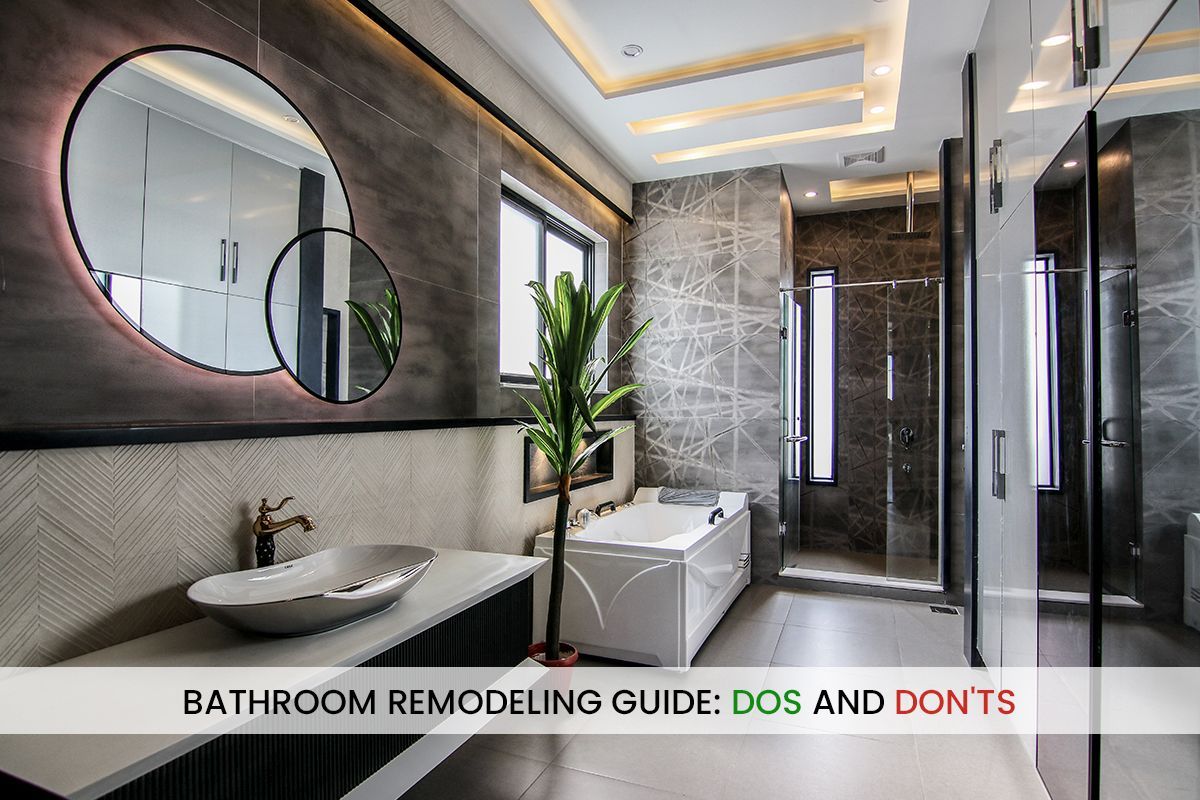Complete Guide to Bathroom Inspection: Safety and Maintenance
Regular bathroom inspections are essential for maintaining a safe, functional, and comfortable living environment. As a Bathroom Remodeling Company in Loganville, we understand that proactive inspection and maintenance can prevent costly repairs while ensuring your bathroom continues to serve your family's needs effectively. This guide covers all key areas of bathroom inspection—from essential safety checks to detailed maintenance steps—to help you safeguard your home and ensure long-term comfort.
Why Regular Inspections Matter
Bathrooms face unique challenges that make regular bathroom inspection crucial for long-term performance and safety. High moisture levels, frequent temperature changes, and constant use create conditions that can lead to hidden problems if not adequately monitored.
Water damage prevention represents one of the most critical reasons for
regular bathroom inspections. Small leaks or moisture infiltration can cause extensive structural damage, mold growth, and costly repairs when left undetected. Early identification through systematic inspection allows for prompt correction before problems escalate.
Safety hazards in bathrooms can develop gradually and may not be immediately apparent during daily use. Loose fixtures, electrical issues, and slip hazards require regular assessment to maintain safe conditions for all family members, particularly children and elderly users.
Maintenance cost control through preventive inspection helps identify minor issues before they become significant problems. Addressing small concerns promptly typically costs significantly less than emergency repairs or complete system replacements.
The Financial Impact of Neglected Maintenance
Bathroom problems that go undetected can result in substantial financial consequences that far exceed the cost of regular inspection and maintenance.
Water damage costs can quickly escalate into thousands of dollars when structural elements, flooring, or adjacent rooms are affected. Insurance coverage may be limited for damage resulting from gradual leaks or maintenance neglect.
Emergency bathroom repair expenses often cost significantly more than planned maintenance due to after-hours service calls, expedited material delivery, and the urgency of restoring essential bathroom functions.
Property value protection depends partly on maintaining bathroom systems in good condition. Well-maintained bathrooms contribute positively to home value, while neglected bathrooms can significantly impact resale potential.
Comprehensive Inspection Checklist
Follow a complete checklist to assess every critical system in your bathroom:
Plumbing System Assessment
The plumbing system forms the backbone of bathroom functionality and requires thorough inspection to ensure reliable performance and prevent water damage.
Bathroom plumbing inspection should include checking for leaks, proper water flow, temperature control, and secure mounting. Test all handles, spouts, and connections for signs of wear or malfunction.
Toilet evaluation involves checking for leaks around the base, proper flushing action, tank function, and secure mounting. Look for water stains, loose bolts, or movement that could indicate seal failure.
Shower and tub assessment includes testing the drain function, checking for leaks around fixtures, evaluating caulk and grout condition, and ensuring proper water pressure and temperature control.
Supply line inspection requires checking visible pipes for leaks, corrosion, or damage. Look for water stains, mineral deposits, or signs of previous repairs that might indicate ongoing issues.
Electrical System Safety Check
Bathroom electrical systems require special attention due to the combination of electricity and moisture that creates unique safety hazards.
GFCI outlet testing should be performed monthly using the test and reset buttons. These safety devices prevent electrical shock and must function properly to protect users from potentially fatal accidents.
Light fixture inspection includes checking for proper mounting, adequate illumination, and signs of moisture infiltration. Replace burned-out bulbs promptly and address any flickering or intermittent operation.
Ventilation fan assessment involves testing the operation, checking for proper airflow, and listening for unusual noises that might indicate bearing wear or obstruction. Clean fan grilles regularly to maintain efficiency.
Electrical panel inspection should verify that bathroom circuits are adequately protected and labeled. Consider upgrading older electrical systems that may not meet current safety standards.
Ventilation and Air Quality Evaluation
Proper ventilation is crucial for preventing moisture problems that can lead to mold growth, structural damage, and poor indoor air quality.
Exhaust fan performance testing involves measuring airflow and checking for proper operation. Fans should remove moisture effectively without excessive noise or vibration.
Natural ventilation assessment includes checking window operation, screen condition, and the effectiveness of passive air circulation. Even bathrooms with mechanical ventilation benefit from natural air exchange when weather permits.
Humidity level monitoring helps identify ventilation inadequacies before problems develop. High humidity levels indicate the need for improved ventilation or fan upgrades.
Mold and mildew inspection requires checking common problem areas like corners, around fixtures, and behind toilets, where air circulation may be limited.
Structural and Surface Inspections
Monitor walls, ceilings, and floors for signs of water damage, wear, or needed repairs:
Wall and Ceiling Assessment
Bathroom walls and ceilings face constant moisture exposure that can lead to various problems requiring regular monitoring.
Paint and finish condition should be evaluated for peeling, bubbling, or discoloration that might indicate moisture problems or ventilation inadequacy. Address finish problems promptly to prevent underlying damage.
Tile and grout inspection involves checking for loose tiles, cracked grout, or missing caulk that could allow water infiltration. Pay special attention to areas around tubs, showers, and sinks where water exposure is highest.
Drywall integrity requires checking for soft spots, stains, or damage that might indicate hidden moisture problems. Use a moisture meter when suspicious areas are identified.
Ceiling condition assessment includes looking for stains, sagging, or texture changes that could indicate roof leaks or plumbing problems in upper floors.
Flooring Evaluation
Bathroom flooring must withstand moisture, temperature changes, and frequent cleaning while providing safe, attractive surfaces.
Tile and grout condition requires checking for loose tiles, cracked grout, or areas where water might penetrate to the subfloor. Address problems promptly to prevent structural damage.
Vinyl and laminate inspection involves looking for lifting edges, bubbles, or damage that could allow moisture infiltration. These materials can hide subfloor problems that require professional assessment.
Subfloor integrity assessment may require removing loose flooring materials to check for water damage, rot, or structural problems that affect safety and performance.
Transition areas between bathroom flooring and adjacent rooms require special attention to ensure proper sealing and an attractive appearance.
Safety and Accessibility Considerations
Improve safety and accessibility to reduce injury risks and support all household members:
Slip and Fall Prevention
Bathroom safety requires ongoing attention to prevent accidents that can cause serious injury, particularly for elderly family members or those with mobility challenges.
Surface traction evaluation includes checking for worn areas, soap buildup, or conditions that create slippery surfaces. Consider adding non-slip treatments or replacing worn materials.
Grab bar inspection involves checking mounting security, proper placement, and load capacity. Test grab bars regularly to ensure they can support the user's weight safely.
Lighting adequacy assessment ensures sufficient illumination for safe navigation, particularly during nighttime use. Consider adding motion-activated lighting for improved safety.
Floor drainage evaluation prevents water accumulation that creates slip hazards. Ensure drains function properly and floors slope appropriately toward drainage points.
Universal Design Elements
Accessibility features benefit all users while providing essential support for family members with mobility limitations.
Door width and clearance should accommodate wheelchairs and mobility aids when needed. Standard doors may require widening for full accessibility compliance.
Shower and tub access evaluation includes checking for barriers that might prevent safe entry and exit. Walk-in showers and grab bars improve accessibility significantly.
Emergency access planning ensures that help can reach users quickly if accidents occur. Consider emergency communication systems for high-risk users.
Maintenance Scheduling and Documentation
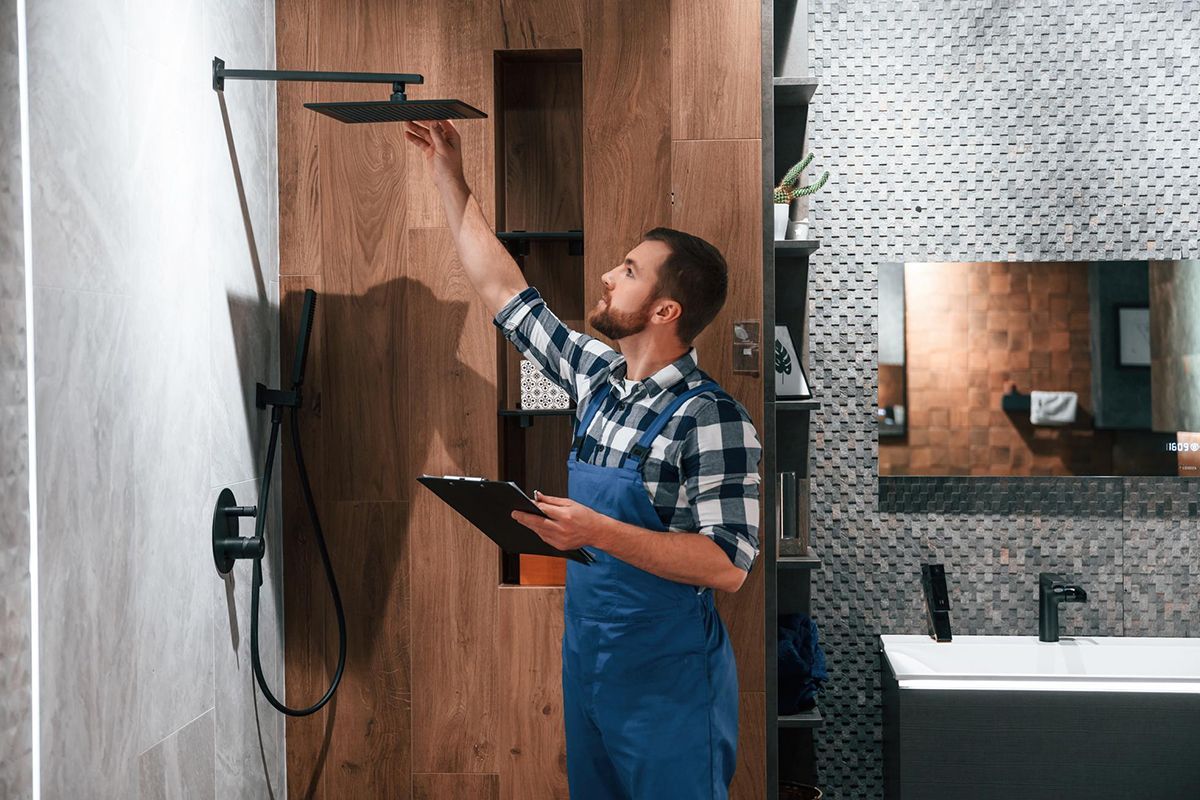
Create a reliable schedule and keep records to track inspections and plan maintenance:
Creating Inspection Schedules
Regular inspection schedules help ensure that all bathroom systems receive appropriate attention before problems develop.
Monthly inspections should include basic safety checks, GFCI testing, and visual assessment of fixtures and surfaces. These quick checks help identify problems that are developing early.
Quarterly inspections allow for a more detailed assessment of plumbing function, ventilation performance, and structural condition—document findings to track changes over time.
Annual inspections should include a comprehensive system evaluation, professional assessment when needed, and planning for upcoming maintenance or improvements.
Seasonal considerations may require adjusting inspection focus based on weather conditions, usage patterns, or specific system vulnerabilities.
Documentation and Record Keeping
Proper documentation helps track bathroom condition over time and provides valuable information for maintenance planning and warranty claims.
Inspection logs should record findings, dates, and actions taken for each inspection. This documentation helps identify patterns and plan preventive maintenance.
Photograph documentation provides visual records of conditions that can be compared over time to track changes or deterioration.
Maintenance records should include all repairs, replacements, and improvements with dates, costs, and warranty information for future reference.
Professional inspection reports from qualified contractors or inspectors provide detailed assessments that supplement regular homeowner inspections.
Professional Inspection Services
Know when to hire experts for complex or risky issues beyond your DIY capabilities:
When to Call Professionals
While homeowners can perform many inspection tasks, certain situations require professional expertise and specialized equipment.
Complex plumbing issues like hidden leaks, pressure problems, or sewer line concerns require professional diagnosis and repair. Don't attempt repairs beyond your skill level.
Qualified electricians should always address electrical problems due to safety risks and code requirements. Never ignore electrical issues in wet environments.
Structural concerns, including foundation problems, load-bearing issues, or extensive water damage, require a professional engineering assessment.
Mold and air quality issues may require professional testing and remediation to ensure safe, healthy indoor environments.
Choosing Qualified Inspectors
Selecting qualified professionals ensures accurate assessment and reliable recommendations for your bathroom systems.
Licensing and certification requirements vary by location and specialty. Verify that inspectors hold appropriate credentials for your specific needs.
Experience and reputation in bathroom systems provide confidence in inspection quality and recommendation reliability. Check references and reviews before hiring.
Insurance and bonding protect homeowners from liability and ensure recourse if problems arise from professional services.
Detailed reporting capabilities help you understand findings and make informed decisions about maintenance and improvements.
Preventive Maintenance Strategies:
Implement regular maintenance tasks to extend system life and reduce repair costs
Routine Maintenance Tasks
Regular maintenance tasks help prevent problems and extend the life of bathroom systems while maintaining optimal performance.
Cleaning schedules should address all surfaces, fixtures, and systems with appropriate products and techniques. Regular cleaning prevents buildup that can cause damage or health issues.
Caulk and sealant maintenance requires regular inspection and replacement to prevent water infiltration. Address gaps or deterioration promptly to avoid costly damage.
Drain maintenance includes regular cleaning and treatment to prevent clogs and odors. Use appropriate products and techniques for your specific plumbing systems.
Ventilation system care involves cleaning fans, checking ductwork, and ensuring proper operation to prevent moisture problems.
Long-Term Planning
Strategic planning helps ensure that bathroom systems continue to meet your family's needs while controlling costs and minimizing disruptions.
Replacement scheduling for major components like water heaters, fixtures, and flooring helps avoid emergencies and allows for better planning and budgeting.
Upgrade planning considers improvements that enhance safety, efficiency, or functionality while adding value to your home.
Budget planning for maintenance and improvements helps ensure adequate resources are available when needed.
Technology integration opportunities may improve efficiency, safety, or convenience while reducing long-term maintenance requirements.
Conclusion: Protecting Your Investment Through Regular Bathroom Inspection
Regular bathroom inspection represents one of the most cost-effective ways to protect your home investment while ensuring safe, comfortable living conditions for your family. The time and effort invested in systematic inspection and maintenance pay dividends through prevented problems, extended system life, and maintained property value.
At PHD Bathroom Remodeling in Loganville, we've seen firsthand how proactive maintenance and inspection prevent costly problems while keeping bathrooms functioning optimally for years. Our 30 years of experience in bathroom systems gives us unique insight into the importance of regular assessment and timely maintenance.
Whether you perform inspections yourself or work with qualified professionals, the key is consistency and attention to detail. Minor problems identified early are almost always easier and less expensive to address than major issues that develop from neglect.
Ready to ensure your bathroom systems are operating safely and efficiently? Contact PHD Bathroom Remodeling at 844-PHD-BATH (844-743-2284) to schedule a comprehensive bathroom assessment.
